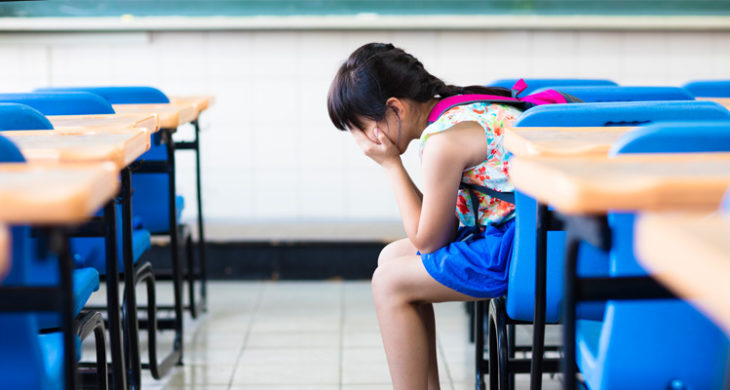We have passed the one year mark since the Coronavirus pandemic spread to the United States resulting in nationwide safety and stay-at-home measures. And though trends are currently moving in a promising direction, the pandemic’s long-term impacts are still unknown. For students specifically, shifts in education have led to a slew of challenges, including learning loss and decreased attendance. Learning loss during the COVID-19 pandemic, referred to as the COVID slide, has been recorded by a number of different school districts and has been anecdotally observed by teachers and families.
Student learning loss has long been an issue that educators face. Over the summer, students often experience learning loss that instructors and intervention programs must address in the fall. The research on summer learning loss’ reach has been mixed, but most studies have concluded that students’ achievement scores decrease after summer break, especially in reading.
While targeted interventions like one-on-one tutoring and school-wide programs have been successful in preventing and combating learning loss, many schools have struggled to keep up with the learning slides attributed to the pandemic. Part of the reason for this is that the pandemic’s effects on students move well beyond the impacts on their learning.
The Pandemic’s Far-Reaching Impact
In addition to educational shifts in learning formats, the pandemic has also affected other aspects of students’ lives, especially in terms of their mental health. According to a survey conducted in June of 2020, seven in ten students reported an issue with their mental health that stemmed from the pandemic. Months later, those mental health issues have worsened for many, which is especially worrying since there had already been an increase in mental health problems for young people before the pandemic. According to the Centers for Disease Control and Prevention, between 2009 and 2019, more students experienced persistent feelings of sadness or hopelessness compared to the years prior to that period. Additionally, roughly one in five students seriously considered suicide.
As mental health issues have worsened, access to resources have also become more limited, an inverse relationship that has compounded the problem. For many students, issues that their teachers or counselors might observe and address from daily interactions go unnoticed due to decreased attendance. Even in places like universities where students may have more direct access to mental health services, the services are being stretched thin. The main source of stress for college students is the same as it is for K-12 students: the fear of the unknown. Students in all grade levels are not sure when in-person schooling will resume, what the next school year will look like, or when they will be able to return to some version of normalcy. Janis Whitlock, the director of the Cornell University Research Program on Self-Injury and Recovery, explains that this fear of the unknown is exacerbated by the fact that young adults are often trying to make important decisions that could potentially inform the course of their adult lives.
In addition to academic and mental health issues, the pandemic has also spurred other hardships for students and their families. The Center on Budget and Policy Priorities has reported that as of January 27th of this year, nearly 24 million adults said that their household sometimes or often did not have enough food to eat. More than 80 million adults, which is approximately 35 percent of all adults, said that it was somewhat or very difficult to cover all of their household’s monthly expenses. It is no surprise that schooling has sometimes fallen in families’ lists of priorities in the face of such financial hardship.
COVID’s Effect on Schools
In order to minimize risks of learning loss, many schools have tried to ensure that students are still attending classes and meeting instructors’ learning goals. However, students aren’t the only ones who have experienced increased stress as a result of trying to carry on as they normally would during such a trying time. Many teachers have experienced increased levels of stress, which has led to an increase in the turnover rate. About 43 percent of the teachers who left the profession in 2020 attributed their decision to COVID-19, and the turnover rate for 2020 is up 75 percent from the rate in 2019.
In addition to increasing teacher shortages, many school districts are also facing potential budget cuts that could result in a lack of resources that would make redressing learning loss even more difficult. Schools get about half of their funding from state tax revenues, which have decreased dramatically during the pandemic. Consequently, budget cuts have doubled what they would be in a “bad year” in some cases, according to Michael Griffith at the Learning Policy Institute.
One Positive Finding Offers Significant Hope
Headlines about the pandemic and its effects on students and families are rarely positive. However, one study by the Northwest Evaluation Association (NWEA) provides a compelling reason to be optimistic about students’ academic futures and further research reveals that there are ways to prevent or avoid the COVID slide entirely—a phenomenon which was widely believed to be inevitable.
The NWEA researchers in that study found that there were consistent levels of assessment performance in reading for all grades tested. However, student performance in mathematics did drop considerably during the pandemic for many students.
Internal researchers at Stride used the methodology identified in NWEA’s study to analyze data related to the pandemic’s impact on student performance in Stride K12-powered schools, compared to results identified in the NWEA study. That study revealed that students enrolled at Stride K12-powered schools, and who participate in one of NWEA’s growth assessments, did not experience the same level of learning loss as their peers. In fact, it was shown that Stride K12-powered students saw more gains than national averages—as many as 27 percentage points in math and 12 percentage points in reading in NWEA standardized testing. Learn more about how Stride K12- powered students did this past year and view the full NWEA Learning Loss Study.
The reasons that these students excelled are twofold: the schools were designed by experts in the field of online education, and Stride K12 already had the resources in place to support students in their educational journeys. Perhaps most interesting of all, while student engagement has plummeted in digital classrooms nationwide, student engagement at Stride K12 schools remains high.
Educational challenges stemming from the pandemic will likely last for years, but the fact that some students have been able to continue learning during such a difficult time in our history is cause for celebration.
If you think your student could benefit from the engaging curriculum and years of experience offered at a Stride K12-powered school, visit the K12 website to learn more and discover a school in your area.
,









